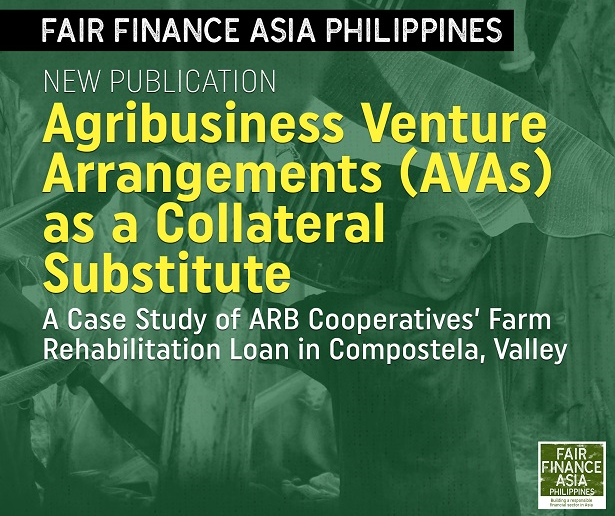
A Case Study of ARB Cooperatives’ Farm Rehabilitation Loan in Compostela, Valley
Many studies (Llanto and Orbeta, 1999; Llanto, 2004; 2005) argued that heavy government interventions, such as loan quota, subsidized interest rates and directed credit programs, failed to promote efficient rural financial markets. Hence, these studies suggested the need for market oriented credit approach to increase the flow of credit in the rural areas (Llanto and Orbeta, 1999; Llanto, 2004; 2005). Unfortunately, in the Philippines’ case, farmers’ access to formal credit remained problematic despite the paradigm shift to a market-oriented credit policy in 1980s. One major reason was that the government continued to implement subsidized credit programs because of the pressure coming from the different interest groups. Such decision undermined the government’s own market-oriented credit and financial policy reform efforts (Llanto, 2005).
In the present time, the rural finance in the Philippines is still problematic. One major barrier to smallholder finance is the lack of traditional collateral such as real estate mortgages. This concern is brought by the passage of Comprehensive Agrarian Reform Program (CARP), established in 1988 through Republic Act (RA) 6657 and later expanded in 2009 through RA 9700. Llanto (2005) purported that the prohibition on mortgaging CARP lands has weakened its value as collateral from the perspective of banks. This is because CARP-distributed lands cannot be transferred (through sale, lease, or other means) until it is fully paid and the title is fully vested in the agrarian reform beneficiaries (ARBs).
In this case, studies such as Nagarajan and Meyer (1995) and Llanto (2004; 2005) suggested the importance of collateral substitutes to extend loans to small farmers in the absence of traditional collateral (e.g. real estate mortgages) demanded by banks. It should be noted that there is no official definition regarding collateral substitutes used by financial institutions in developing countries (Nagarajan and Meyer, 1995). Nevertheless, some scholars (e.g. Balkenhol and Schütte, Binswanger, et al. (1986) as cited in Feder, Ochan and Raparia, 1988; Binswanger, et al. (1986) as cited in Nagarajan and Meyer, 1995) provided definitions on collateral substitute. In fact, Binswanger et al. (1986) gave a comprehensive definition of collateral substitute (as cited in Nagarajan and Meyer, 1995).